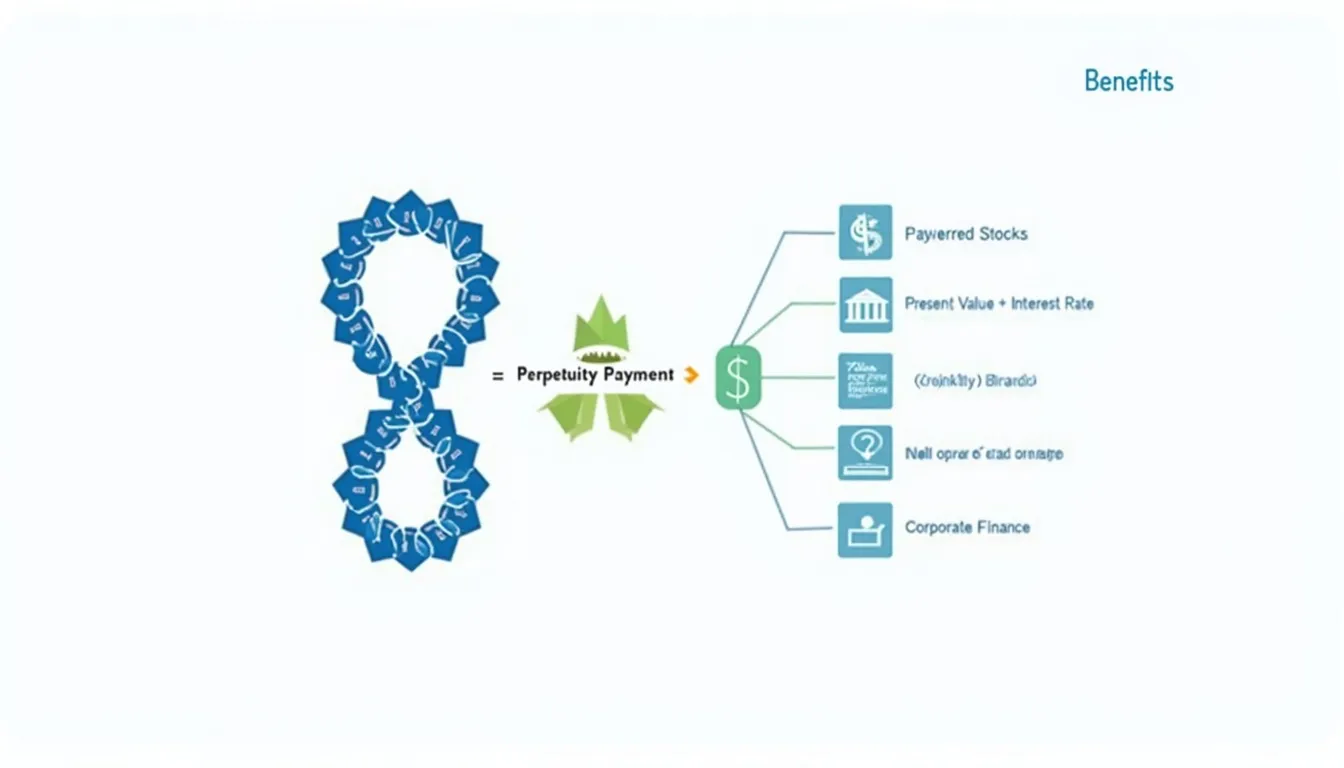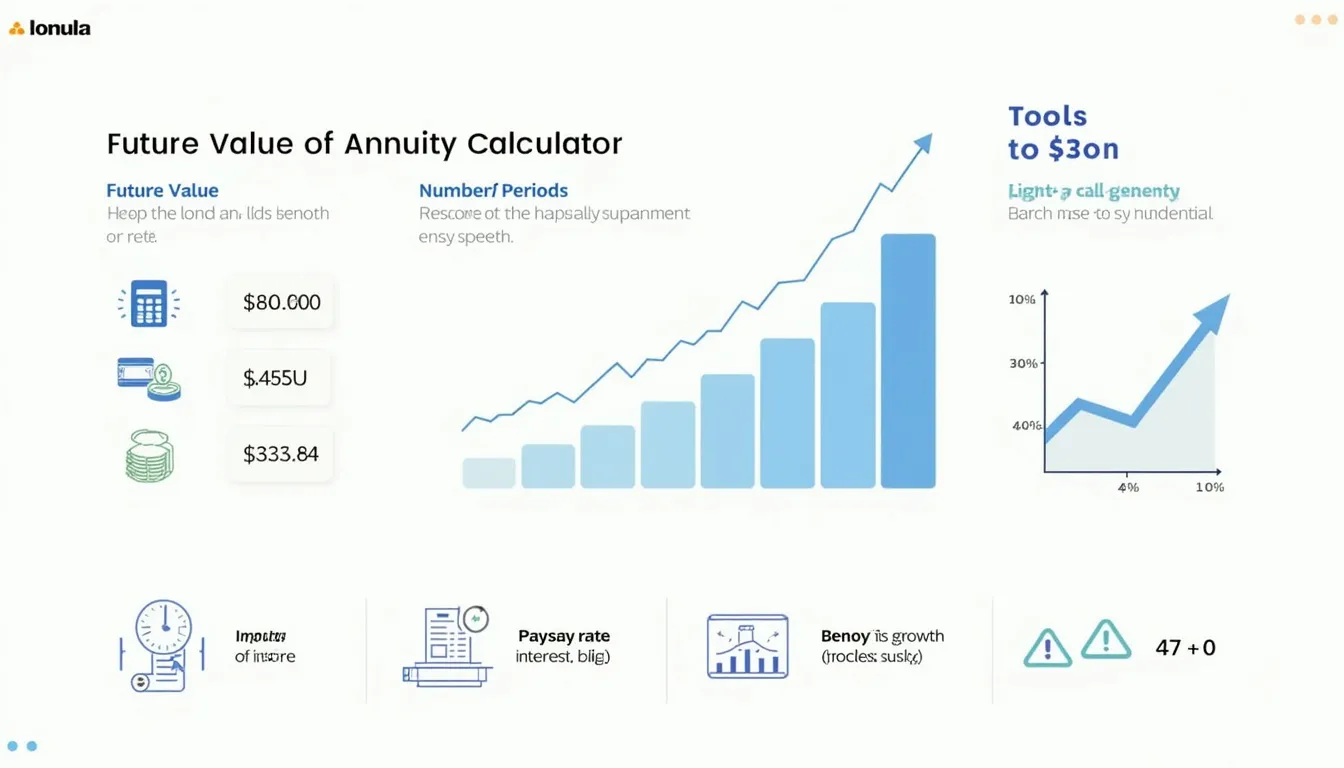Perpetuity Payment Calculator
Is this tool helpful?
How to use the tool
- Type the Present Value of the perpetuity, e.g., 75,000 or 320,000.
- Enter the Interest Rate as a percentage, e.g., 3.8 % or 9 %.
- Press “Calculate” to see your fixed periodic payment.
Underlying formula
Constant perpetuities rely on one equation:
$$Payment = Present\ Value \times Interest\ Rate$$
Inverse calculation:
$$Present\ Value = rac{Payment}{Interest\ Rate}$$
Example 1
- PV = 75,000
- r = 3.8 % → 0.038
- Payment = 75,000 × 0.038 = 2,850.00
Example 2
- PV = 320,000
- r = 9 % → 0.09
- Payment = 320,000 × 0.09 = 28,800.00
Quick-Facts
- The perpetuity formula appears in most corporate-finance textbooks (Berk & DeMarzo, 2020).
- Typical preferred-stock yields range 4 – 8 % (SEC, “Investor Bulletin: Preferred Stock”).
- U.S. cap rates for stable rental property averaged 6.5 % in 2023 (NAR, 2023).
- Long-term U.S. Treasury real yield hovered near 1.8 % in 2024 (U.S. Treasury Data).
FAQ
What is a perpetuity?
A perpetuity is a cash-flow stream that pays a fixed amount at regular intervals forever (Investopedia, “Perpetuity”).
How does the calculator work?
It multiplies your present value by the decimal form of the interest rate to return the payment instantly—no compounding adjustments needed (Berk & DeMarzo, 2020).
Why must the rate be between 0 % and 100 %?
Rates above 100 % imply payments exceed the principal every period, while zero or negative rates yield undefined results; standard finance texts set 0 < r < 1 (Hull, 2022).
Can I use it for growing perpetuities?
No. Growing streams require the Gordon Growth formula, Payment = PV × (r – g); this tool assumes g = 0 (Gordon, 1962).
What units does the result use?
The payment shares the same currency as your input present value; enter dollars to receive dollars, euros for euros.
How accurate is the output?
Results are exact to two decimals, limited only by input rounding; the underlying equation has no approximation error (“Accuracy in Financial Calculators,” TI Guide).
Is taxation considered?
The calculator shows gross payments; tax treatment varies by jurisdiction, see IRS Pub 550 for U.S. rules (IRS, 2023).
Where are perpetuities used in practice?
They value preferred dividends, land rents, and some endowments; Canada’s “consol” bonds paid perpetual coupons until 1990 (Bank of Canada History).
Important Disclaimer
The calculations, results, and content provided by our tools are not guaranteed to be accurate, complete, or reliable. Users are responsible for verifying and interpreting the results. Our content and tools may contain errors, biases, or inconsistencies. Do not enter personal data, sensitive information, or personally identifiable information in our web forms or tools. Such data entry violates our terms of service and may result in unauthorized disclosure to third parties. We reserve the right to save inputs and outputs from our tools for the purposes of error debugging, bias identification, and performance improvement. External companies providing AI models used in our tools may also save and process data in accordance with their own policies. By using our tools, you consent to this data collection and processing. We reserve the right to limit the usage of our tools based on current usability factors.







